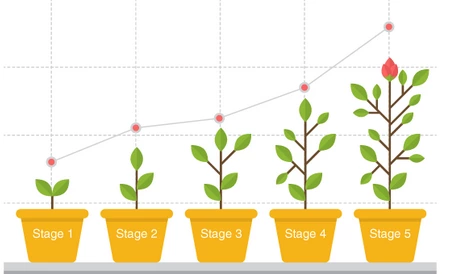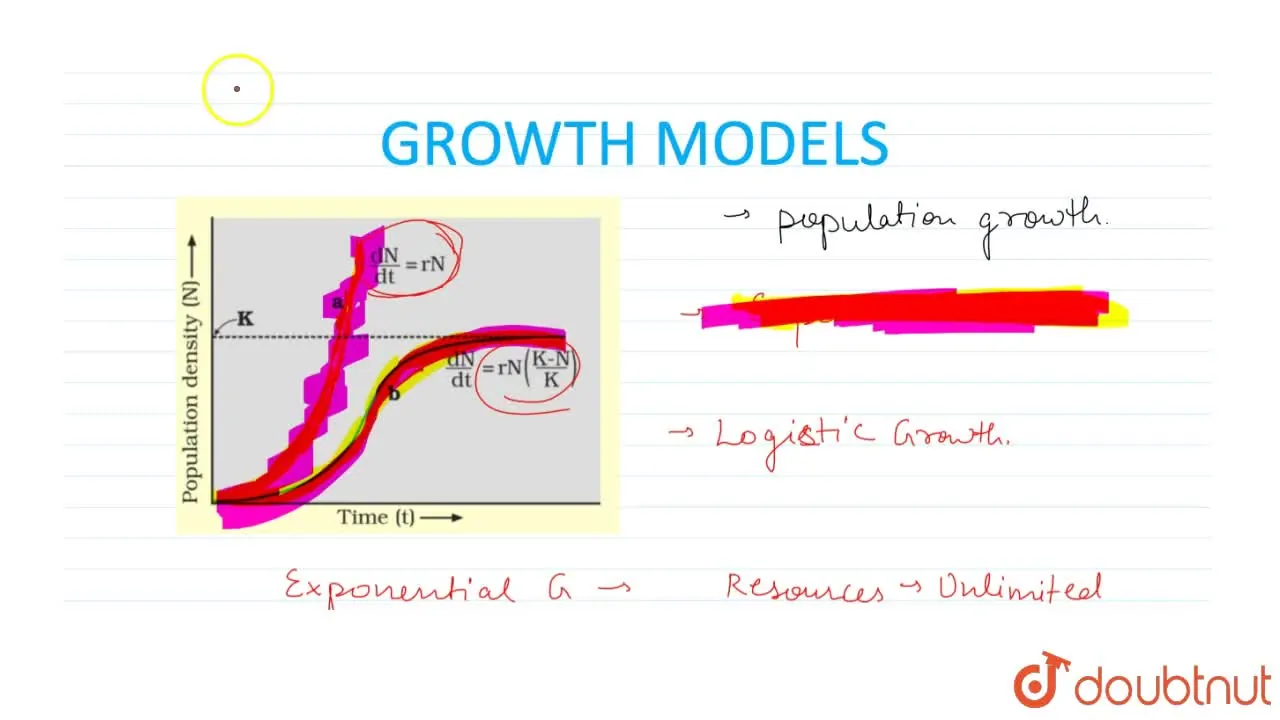Growth Models
Growth Models
Growth is characterized as an irreversible consistent increment in the size of an organ or even an individual cell. In other words, development is the essential qualities of living bodies joined by different metabolic procedures that occur at the expense of vitality. The procedures can be anabolic or catabolic. With regards to plants, the seeds sprout, form into a seedling and gain a state of a grown-up plant are discrete phases of development and the development of Plants is inconclusive. In the Biological term, there's a brief distinction between the development and advancement of the term. These words depict a different arrangement of occasions in a life form or plant.
Growth alludes to the expansion in mass and size of a body. Improvement is where a specific life form develops genuinely as well as gains mental and physiological development also.
Growth and Development
Growth happens all through life expectancy yet not consistently. It happens at a quicker rate until a plant or creature achieves development. After this stage, step by step development eases back down and stops after a specific time.
This whole procedure and phenomena, where an organism, develops truly, advances physiologically, accomplishes mental development and development. This is on the whole known as development. The procedure of improvement of shape and structure of a living life form is known as Morphogenesis. However, Differentiation is the procedure of progress in cells, tissues and inward and outer organs.
Types of Growth
- Primary and Secondary Growth: The mitotic divisions in meristematic cells at the root and shoot pinnacle climbs the length of the plant. This is called as Primary Growth while Secondary meristem, which brings about an expanded measurement of the plant known as Secondary Growth.
- Vegetative Growth: The development in plants before flowering is known as vegetative growth. It incorporates the arrangement of leaves, branches, and stems.
- Reproductive Growth: In this stage, the plants start to bloom, which is a regenerative individual from the plant.
Characteristics of Growth
Plants display the capacity of development throughout their life. It is a direct result of the presence of meristems at specific areas on the body, and meristems have the ability to gap and self-sustain.
Growth is measurable. It is to be noted that growth is the outcome of the expansion in the cellular material, and this ascent isn't anything but difficult to quantify. Development is estimated by various techniques, for example, the ascent in dry weight, the number of cells, volume, climb in new weight or volume.
The figure underneath shows the situation of apical root meristem, vascular cambium and shoot apical meristem. The bolts show the development heading of organs and cells.

When it comes to the growth of plants, they are grouped into three stages:
Formative Phase: The division of cells in the development of plants is the basic event. Each cell brings about the division of cells that existed previously. Mitosis is a sort of cell division that happens during development and includes both subjective and quantitative division of the phones.
Related Videos:
- Two growth models
- Draw population growth curves and explain them
- Explain J-shaped pattern of population growth
This division happens in two stages:
To begin with, the division of the nucleus which is called as karyokinesis and division of cytoplasm known as cytokinesis. An increased number of cells is found in higher plants in the meristematic area, and some specific cells hold this meristematic event. At the same time, some enter in the following period of the development called the period of cell growth.
Cell Differentiation and Cell Enlargement: At this stage, the size of organs and tissues increments and this happens by the arrangement of Protoplasm, creating vacuoles, Hydration and afterwards coordinating new cell divider to make it thicker and perpetual.
Cell Maturation: The enlarged cells at this stage gain explicit structures and size dependent on their job and area. Henceforth, different cells are separated from perplexing and basic tissues that perform various capacities.
Factors Affecting Growth
Hormones in animals and growth controllers help plants to develop consistently. We should talk about a portion of the variables influencing development in different living creatures. It would be helpful on the off chance that we isolate these elements into two general classifications to be specific – Internal and External Factors.
External Growth Factors
- Light – Light is one of the most vital parts of photosynthesis in plants.
- Temperature – Every life form needs an appropriate temperature to get by, to develop, to create different tissues and organs, to imitate.
- Water – Plants assimilates water through their underlying foundations and use it for photosynthesis and other biochemical procedures.
- Mineral Nutrients – Other than light, water, and ideal temperature, living beings need extraordinary supplements to help their nourishment making procedure and digestion, which at last lifts development in them.
Inner Growth Factors
In people, the Growth Hormone is known as Somatotropin. Plants additionally contain such hormones called – Auxins, Gibberellins, Cytokinins, Ethylene, Abscisic corrosive. These are also known as Plant Growth Regulators.
Important Chapters:

Similar Questions
Bohr Model
View SolutionAccording to the logistic population growth model, the growth rate is independent of
View Solutionselect the incorrect statement for exponential growth model.
View SolutionWhich of the following is considered as more realistic growth model ?
View SolutionWhat is population growth ? Write an account on exponential growth model of population.
View SolutionAssertion: Logistic growth model is considered a more realistic as compared to exponential growth model.
Reason: Resources for growth for most animal population are finite and becomes limiting sooner or later.View SolutionWhat is "carrying capacity" of a species in a habitat? Why is logistic growth model considered more realistic?
View SolutionThe logistic population growth model, dN/dt=rN (K-N/K), describes a populations growth when an upper limit to growth is assumed. This upper limit to growth is known as the population's ________ and as N gets larger,dN/dt________.
View SolutionThe logistic population growth model
dNdt=rN(K−NK) describes a population
growth when an upper limit to growth is assumed. This upper limit of growth is known as population …….A……..and as N gets larger, dNdt ……..B…….View SolutionThe unbalanced growth model was propounded first by
1. Albert O. Hirschman
2. H. S. Singer and Raul Prebisch
3. Kindelberger and Ragnar Nurkse
4. W. W. Rostow and Paul StreetenView Solution


